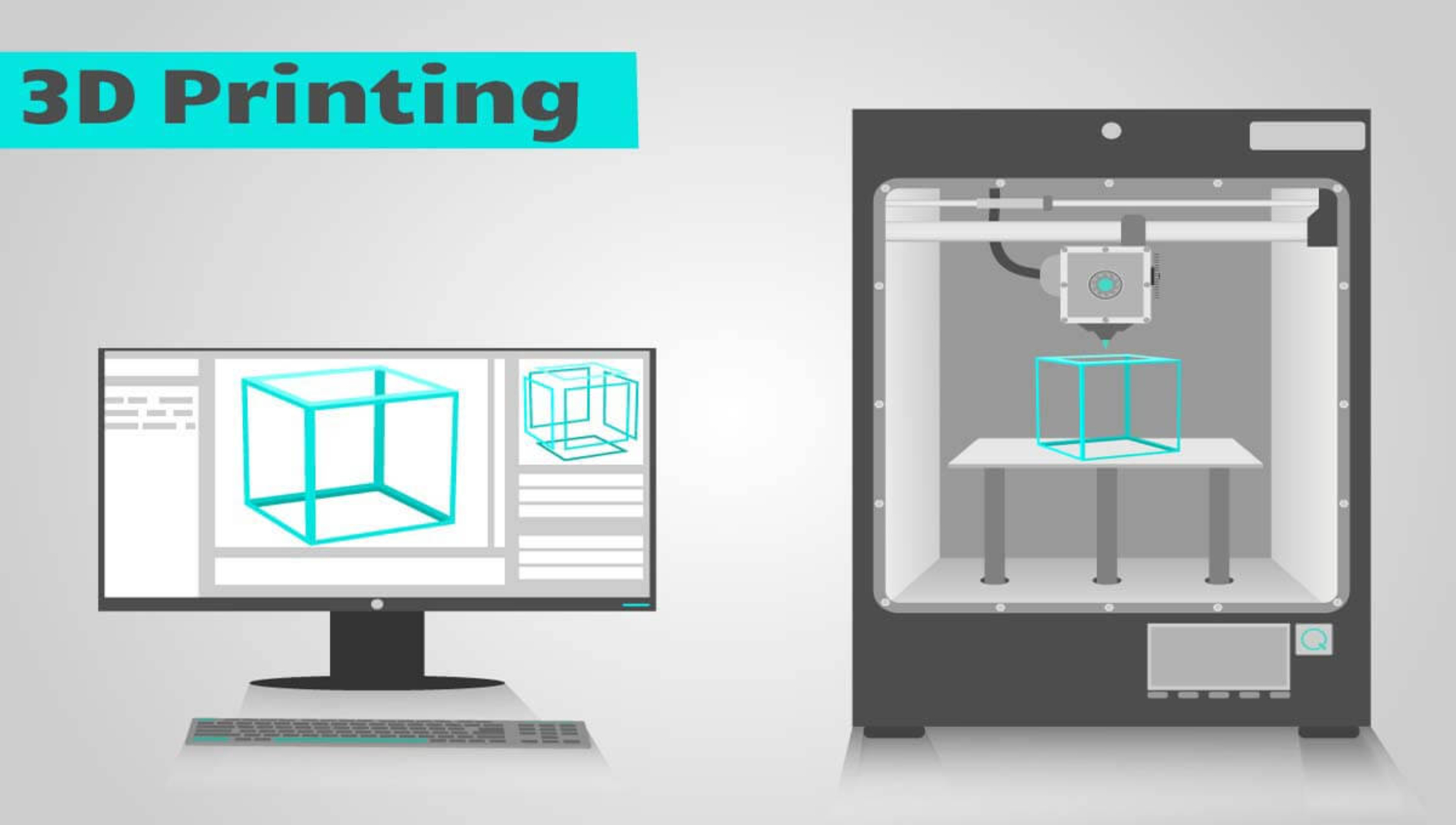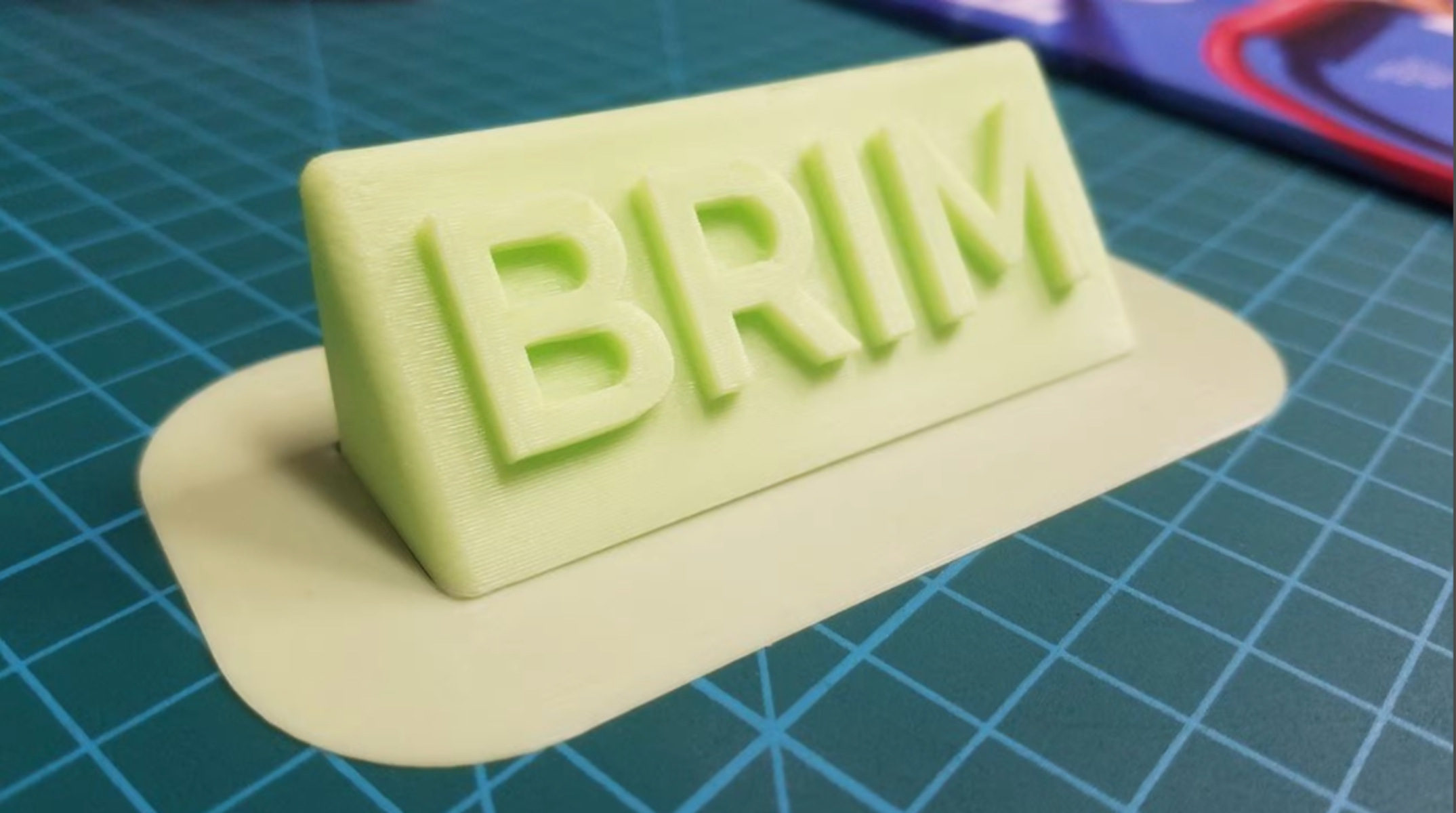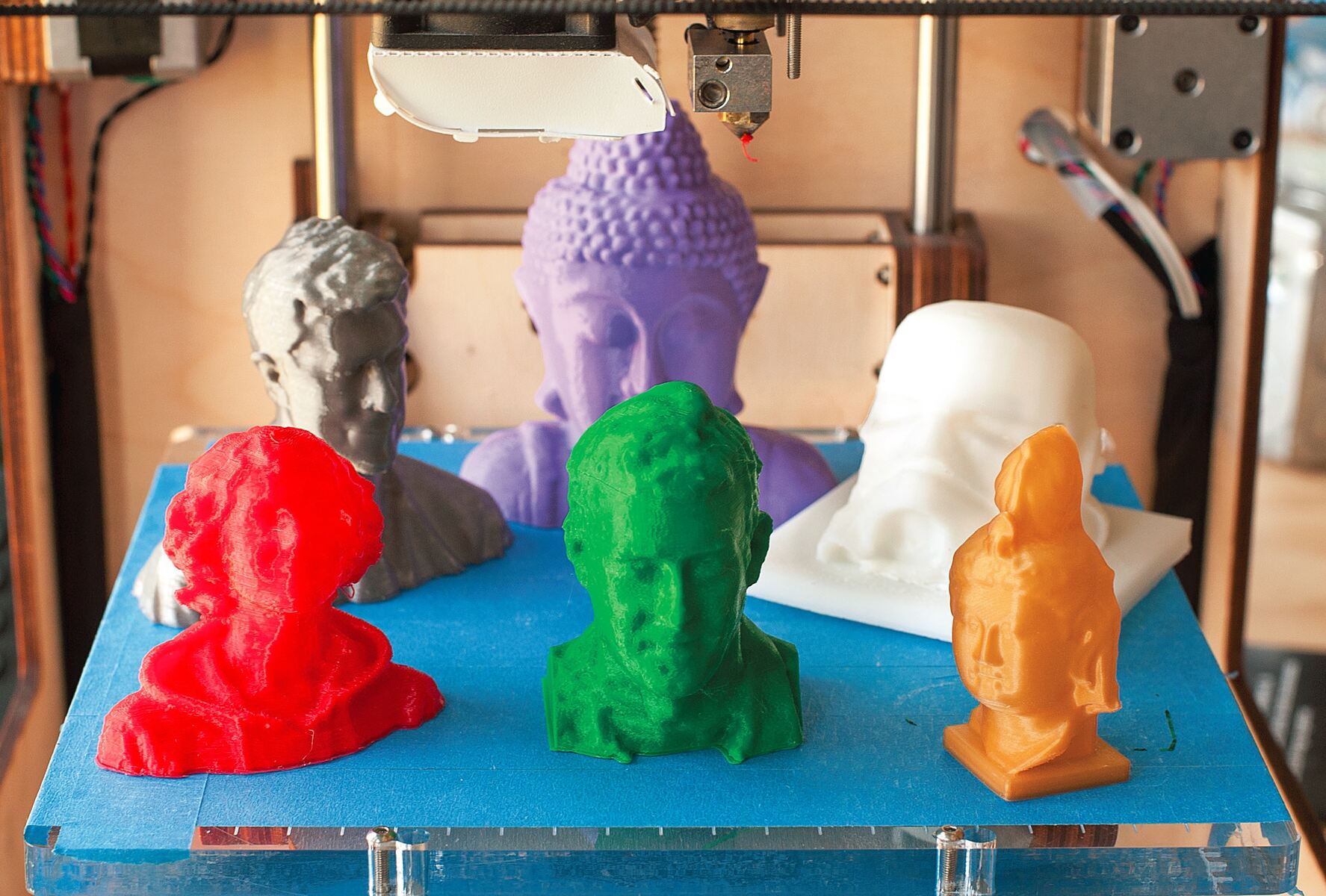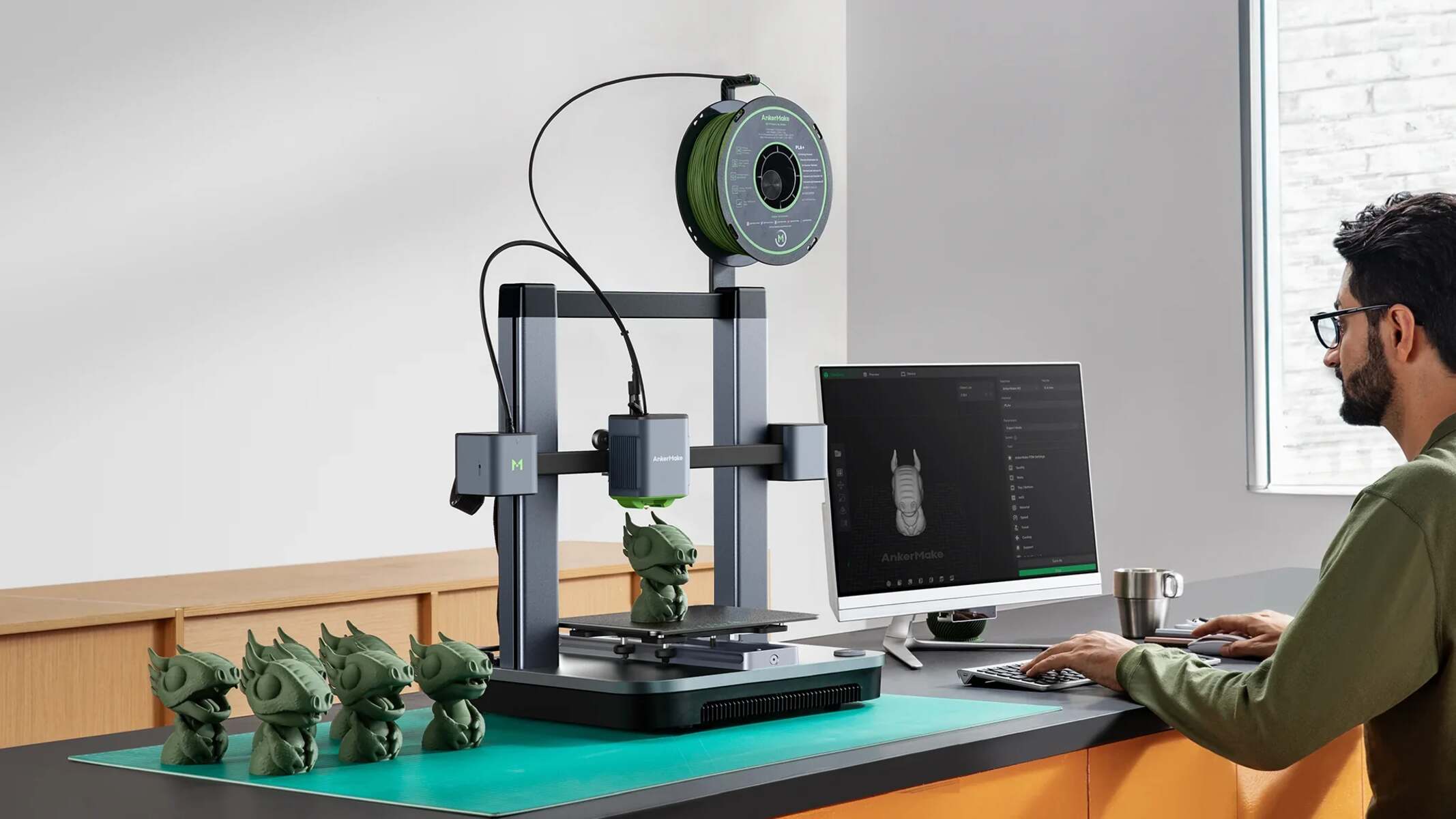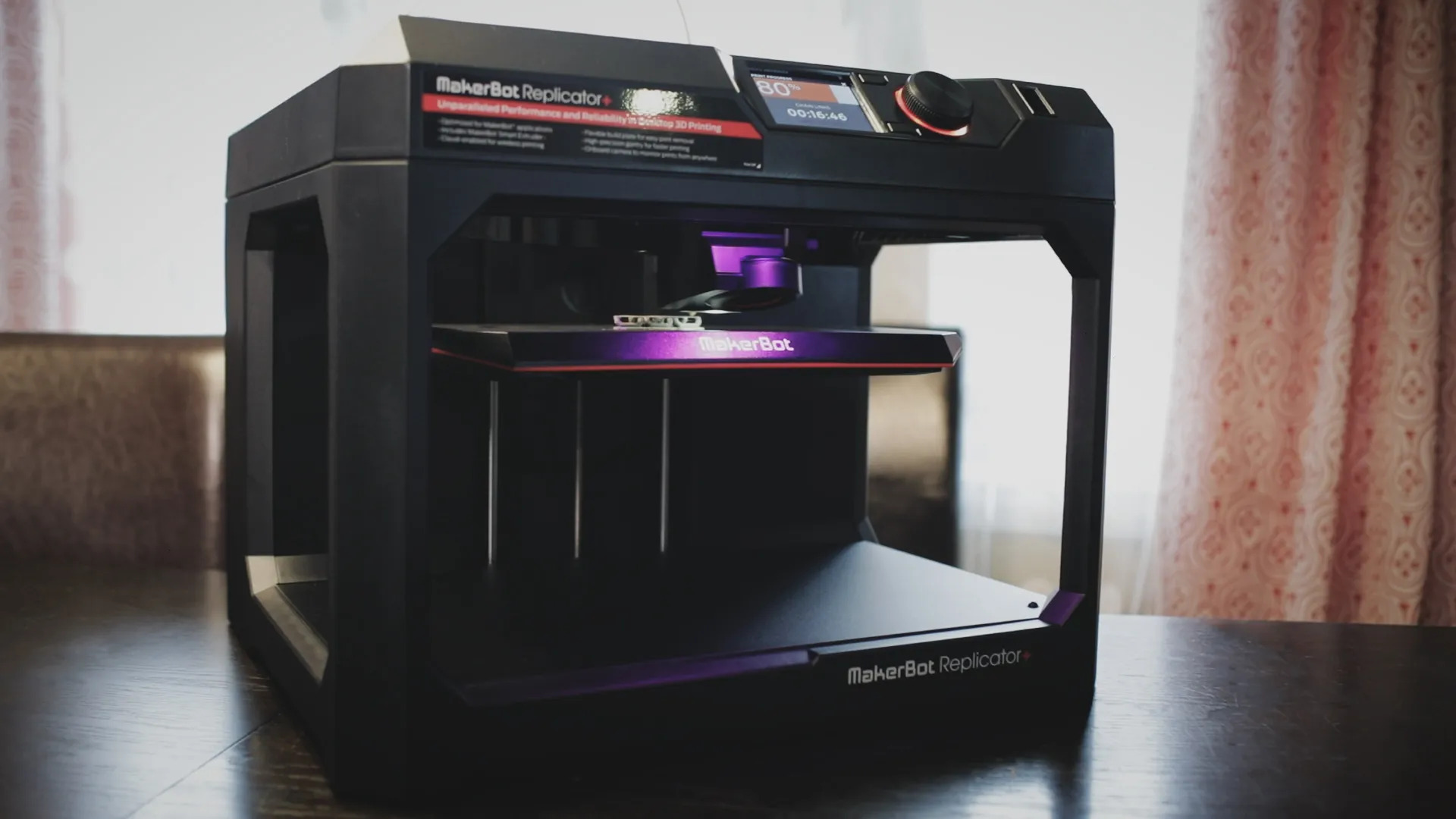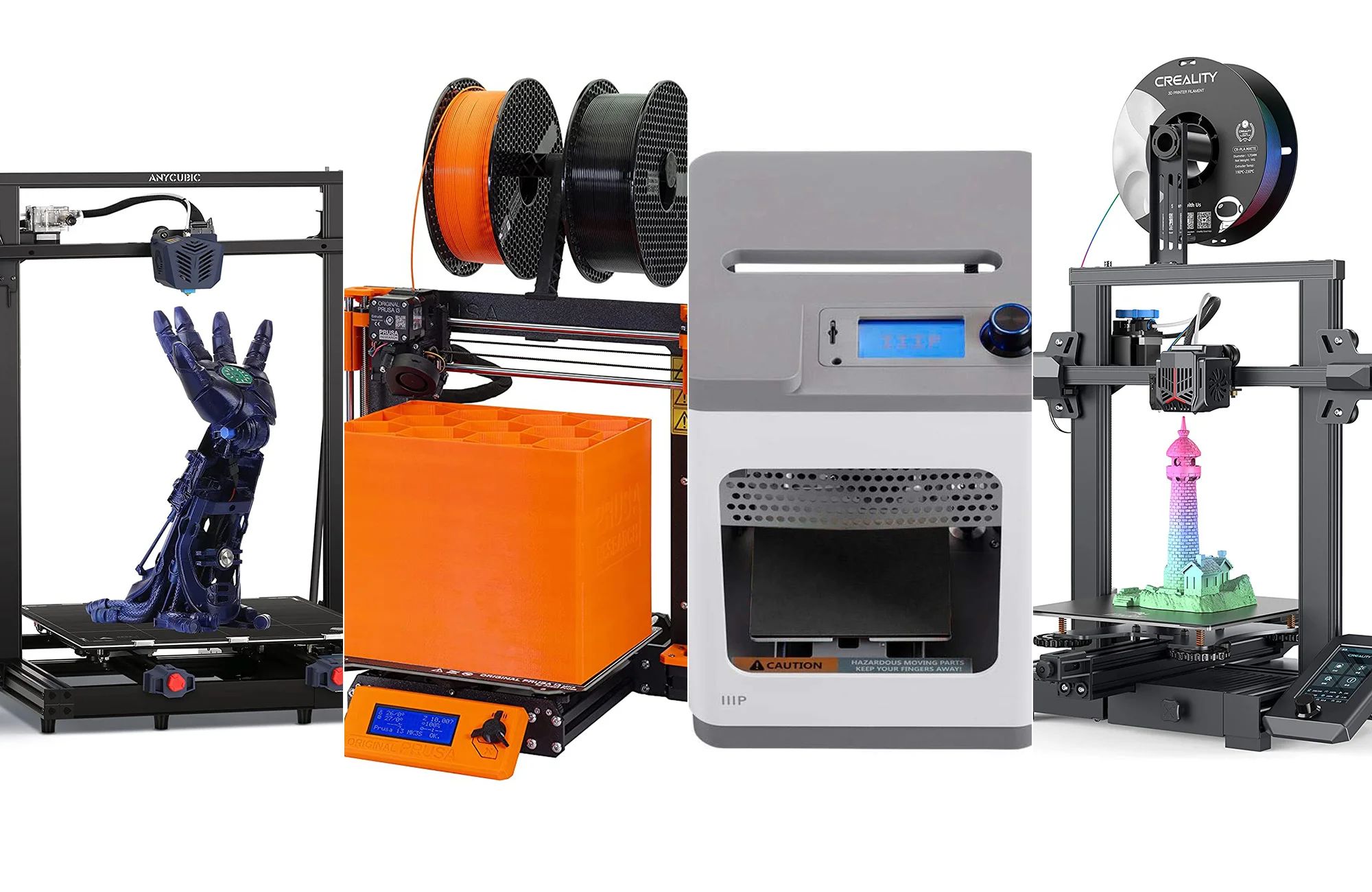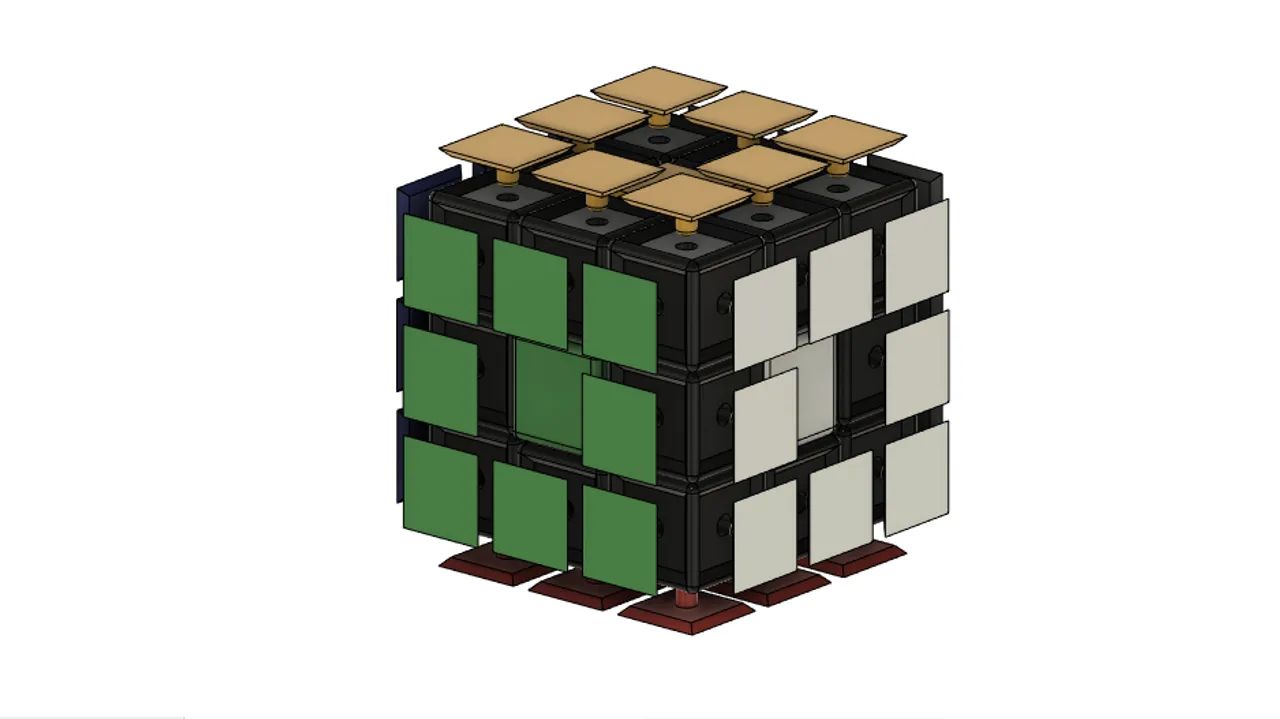Introduction
Welcome to the world of 3D printing! Whether you are a beginner or a seasoned enthusiast, understanding the software used in 3D printing is essential for bringing your creations to life. In this article, we will explore the various software tools and applications involved in the 3D printing process, from design to printing and everything in between.
Before we delve into the specifics, let’s briefly discuss the overall workflow of 3D printing. To create a three-dimensional object, you typically start with a digital design file. This file can be created using various software applications, including 3D modeling software, computer-aided design (CAD) software, or even 3D scanning software if you are working with an existing object. Once the design is ready, it needs to be prepared for printing. This involves slicing the design into layers and generating the necessary instructions for your 3D printer to follow. Finally, the printer control software takes these instructions and controls the printing process, ensuring precise layer-by-layer deposition of the material.
Now that we have a basic understanding of the 3D printing workflow, let’s dive into the different software categories involved:
Design Software
Design software is the starting point for creating 3D printable models. These software applications allow you to design and manipulate objects in a virtual 3D environment. One popular design software is Autodesk Fusion 360, which offers a comprehensive set of tools for 3D modeling and parametric design. It is widely used in various industries and provides both professional and hobbyist users with a powerful and intuitive interface.
If you are a beginner or looking for a more user-friendly option, Tinkercad is a great choice. It is a web-based design platform that is free to use and has a simple drag-and-drop interface, making it accessible to users of all skill levels. Tinkercad is especially well-suited for educational purposes and is often used in schools and workshops to introduce students to the world of 3D design.
For more advanced users, Blender is a versatile and feature-rich design software that supports not only 3D modeling but also animation and rendering. It is an open-source software with a strong community, making it a popular choice among artists and designers. Other notable design software options include Rhino 3D, SolidWorks, and SketchUp.
Regardless of the design software you choose, it’s important to familiarize yourself with its features and tools. Understanding concepts like extrusion, filleting, and Boolean operations will greatly enhance your ability to create complex and intricate designs. Additionally, learning keyboard shortcuts and utilizing online tutorials and forums can help you improve your design skills and work more efficiently.
Design software plays a crucial role in the 3D printing workflow, allowing you to bring your imagination to life in the digital realm. With the right tools and a bit of practice, you can create stunning and functional 3D models ready for printing.
Slicing Software
Once you have created your 3D design, the next step is to prepare it for printing. This is where slicing software comes into play. Slicing software takes your 3D model and breaks it down into a series of thin horizontal layers, known as slices or layers. It also generates the necessary instructions, such as toolpaths and settings, for your 3D printer to follow during the printing process.
One of the most popular slicing software programs is Ultimaker Cura. It is a user-friendly and feature-rich software that supports a wide range of 3D printers. Cura offers a variety of slicing options, allowing you to customize settings like layer height, print speed, and material type to achieve the desired print quality and accuracy. It also provides a simulation feature that enables you to visualize the printing process before starting the actual print.
Another well-known slicing software is PrusaSlicer, developed by the makers of Prusa 3D printers. PrusaSlicer offers a robust set of features and provides advanced options for fine-tuning print settings. It supports multi-material printing, variable layer height, and various infill patterns, giving you greater control over the final printed object.
Slicer software such as Simplify3D and Slic3r are also widely used in the 3D printing community. Simplify3D is known for its advanced features, including customizable support structures, variable print settings, and the ability to split complex models into multiple parts for easier printing. Slic3r, on the other hand, is an open-source slicing software that offers a range of configuration options and supports multi-material printing.
When choosing slicing software, it is important to consider factors such as compatibility with your 3D printer, ease of use, and the level of customization it offers. Experimenting with different settings and profiles can help you optimize print quality and achieve the desired results.
Slicing software acts as the intermediary between your 3D design and the physical printing process. With the right slicing settings, you can ensure that your 3D printer creates each layer accurately, resulting in a high-quality printed object.
Printer Control Software
Printer control software, also known as printer management software, is an essential component of the 3D printing process. It allows you to communicate with and control your 3D printer, ensuring smooth and efficient printing operations.
One widely used printer control software is OctoPrint. This open-source software provides a web-based interface that allows you to monitor and manage your printer remotely. With OctoPrint, you can control various aspects of the printing process, such as starting and stopping prints, adjusting temperature settings, and performing bed leveling. It also offers features like time-lapse recording and webcam streaming, providing a visual representation of the printing progress.
Other popular printer control software options include Repetier-Host, which offers a comprehensive set of tools for managing 3D printers, and Pronterface, an open-source software that provides a simple and straightforward interface for controlling your printer.
Many 3D printer manufacturers also provide their own proprietary printer control software. For example, Ultimaker offers Ultimaker Cura Connect, which allows you to manage multiple Ultimaker printers from a single interface. Similarly, PrusaControl is provided by Prusa Research specifically for managing their line of Prusa 3D printers.
Printer control software not only enables you to control your printer but also provides important information and feedback during the printing process. It displays real-time data such as temperature, print progress, and estimated time remaining. Additionally, it can send notifications or alerts if any issues arise, such as filament jams or bed adhesion problems.
Using printer control software streamlines the printing workflow and enhances user experience. It offers greater control and convenience, allowing you to make adjustments and monitor your prints from a distance. Whether you are working on a single printer or managing multiple machines, printer control software is a valuable tool for maximizing your 3D printing capabilities.
3D Modeling Software
3D modeling software is a key component in the creation of detailed and complex 3D models for 3D printing. These software applications provide a range of tools and features that enable users to create digital representations of objects in three dimensions.
Autodesk Maya is a popular and powerful 3D modeling software used in various industries, including film, gaming, and architecture. It offers a wide array of tools for creating detailed characters, environments, and visual effects. Maya’s advanced features, such as dynamics and particle simulations, make it ideal for creating realistic and dynamic 3D models.
ZBrush is another widely used 3D modeling software that focuses on digital sculpting. It provides an intuitive interface and powerful sculpting tools that allow artists to create highly detailed and organic models. ZBrush’s unique Pixologic technology uses a technique called “pixel sculpting” to achieve intricate details and textures in 3D models.
Blender, an open-source 3D modeling software, is renowned for its versatility and wide range of capabilities. It offers a comprehensive set of modeling tools, including mesh editing, sculpting, and UV mapping. Blender also features a powerful animation system and a built-in game engine, making it a popular choice for animators and game developers.
For those engaged in architectural design, SketchUp is a user-friendly 3D modeling software that offers a range of tools specifically tailored for creating buildings and interior spaces. It allows users to quickly create and modify 3D models using its intuitive interface and extensive library of pre-built components.
Other notable 3D modeling software options include 3ds Max, SolidWorks, and Cinema 4D. Each software offers its own unique set of features and learning curve, so it’s essential to choose the software that aligns with your specific needs and skill level.
3D modeling software enables users to bring their imagination to life in a digital form. Whether you are creating characters, products, or architectural designs, having the right 3D modeling software can significantly enhance your ability to create detailed and visually appealing 3D models ready for 3D printing.
3D Scanning Software
3D scanning software plays a crucial role in capturing real-world objects and converting them into digital 3D models. It allows you to scan physical objects using various types of 3D scanners and create accurate representations of them in a digital format.
One popular 3D scanning software is Meshroom, an open-source program that utilizes photogrammetry, a technique that reconstructs 3D models from a series of photographs. Meshroom takes a set of overlapping photos of an object or a scene and uses computer vision algorithms to create a detailed and textured 3D model. It provides an intuitive interface and powerful processing capabilities, making it suitable for both beginners and advanced users.
Another widely used 3D scanning software is Artec Studio. Developed by Artec 3D, this software supports various Artec handheld 3D scanners and provides advanced features for capturing and processing high-quality 3D scans. Artec Studio offers real-time scanning feedback, automatic alignment, and scanning optimization tools, enabling users to create accurate and detailed 3D models with ease.
For those looking to scan larger objects or environments, Matterport is a popular choice. It offers a combination of hardware and software, allowing users to capture 3D scans of entire rooms or buildings. Matterport’s software provides advanced editing and customization features, enabling users to enhance and optimize their scans for various applications, such as virtual reality, architectural visualization, and real estate listings.
MeshLab is an open-source software that provides a range of tools for processing and editing 3D scans. It allows users to clean up and align scans, remove unwanted noise, and generate watertight mesh models. MeshLab is often used in conjunction with other 3D scanning software to post-process and prepare the scans for 3D printing or other applications.
Depending on your specific needs, there are many other 3D scanning software options available in the market. It’s important to consider factors such as the compatibility of the software with your 3D scanner, the level of control and customization it offers, and the post-processing capabilities provided.
3D scanning software opens up a world of possibilities, allowing you to bring real-world objects into the digital realm. By utilizing these software tools, you can capture and create accurate and detailed 3D models that can be further modified, analyzed, or 3D printed for various purposes.
CAD Software
CAD (Computer-Aided Design) software is a crucial tool for engineers, architects, and designers in creating precise and detailed 3D models. CAD software offers a wide range of features and tools that facilitate the design and documentation of various objects and structures.
Autodesk AutoCAD is one of the most widely used CAD software in various industries. It provides a comprehensive set of tools for 2D and 3D design, enabling users to create accurate and detailed models of buildings, mechanical parts, and more. AutoCAD offers advanced features such as parametric modeling, dynamic blocks, and extensive libraries of predefined components and materials.
SolidWorks is another popular CAD software that focuses on mechanical design. It provides a suite of tools for creating 3D models, performing simulations, and generating engineering documentation. SolidWorks’ parametric modeling capabilities and advanced assembly features make it an industry standard in the field of mechanical engineering.
Fusion 360, developed by Autodesk, is a cloud-based CAD software that offers a comprehensive set of tools for 3D modeling, simulation, and collaboration. It combines parametric modeling, generative design, and cloud computing capabilities, enabling users to design and iterate on their models easily. Fusion 360’s integrated platform also allows for seamless data exchange and collaboration among team members, making it suitable for both individual designers and large design teams.
Rhino 3D, also known as Rhinoceros, is a powerful CAD software used primarily for industrial and automotive design. It offers robust modeling tools for creating organic shapes, advanced surfacing capabilities, and comprehensive rendering options. Rhino 3D’s flexibility and interoperability with other software make it a popular choice among designers and artists.
In addition to the aforementioned CAD software, other notable options include CATIA, Siemens NX, and PTC Creo. Each software has its own strengths and specialties, so it’s important to consider your specific requirements and industry when choosing the best CAD software for your needs.
CAD software revolutionizes the design process, allowing for greater accuracy, efficiency, and collaboration. Whether you’re creating complex mechanical parts, architectural structures, or intricate product designs, CAD software is an indispensable tool in the world of engineering and design.
File Management Software
File management software is essential for organizing and managing the vast number of digital files involved in the 3D printing process. It helps users keep track of their 3D models, designs, and other related files, ensuring efficient workflow and easy access to the necessary files when needed.
One popular file management software is Ultimaker Digital Factory. It is a cloud-based platform that allows users to store, manage, and organize their 3D models and print files. Ultimaker Digital Factory provides a central hub for managing files, monitoring printer progress, and collaborating with team members. It offers features such as file versioning, access control, and real-time print monitoring, streamlining the 3D printing workflow.
Another widely used file management software is GrabCAD Workbench. It is specifically designed for engineers and designers, offering collaboration, version control, and project management capabilities. GrabCAD Workbench allows multiple users to work on the same project simultaneously, ensuring that everyone has the latest version of the files and facilitating seamless collaboration.
For those who prefer an open-source solution, software like OctoPrint and Repetier-Server are a good option. These platforms provide a web interface that allows users to access, manage, and organize their files from any device with internet access. They offer features like file upload, folder organization, and remote printing, enhancing flexibility and accessibility.
In addition to dedicated file management software, cloud storage solutions like Dropbox, Google Drive, and Microsoft OneDrive can also be used for managing and accessing 3D printing files. These platforms offer file syncing across devices, collaboration features, and easy file sharing, making them convenient options for storing and organizing 3D models and related files.
When choosing file management software, consider factors like ease of use, compatibility with your existing workflow and software, and the level of file organization and collaboration features you require. Taking advantage of file management software ensures that your 3D printing files are organized, secure, and easily accessible, enabling a smooth and efficient 3D printing process.
Additional Tools and Software
In addition to the core software used in the 3D printing process, there are several additional tools and software that can enhance your experience and capabilities. These tools provide solutions for specific tasks and address various aspects of the 3D printing workflow.
Firstly, calibration software plays a crucial role in ensuring the accuracy and precision of your 3D printer. Calibration tools, such as the popular XYZware and Prusa Calibration Wizards, help you fine-tune your printer settings, including bed leveling, extruder calibration, and filament flow rate. Proper calibration ensures consistent and high-quality prints.
Mesh repair software is also essential for the successful printing of 3D models. Sometimes, 3D models may have errors or imperfections, such as non-manifold geometry or intersecting faces. Mesh repair tools like Netfabb or Meshmixer can automatically detect and repair these issues, ensuring that your models are printable and free from potential printing errors.
Filament management software can assist in tracking and managing your filament inventory. These tools help you keep track of filament usage, material types, and remaining spool lengths. Software such as OctoPrint Filament Manager and PrusaSlicer’s Filament Tracker allow you to monitor filament levels and receive notifications when it’s time to change or reorder a spool.
To optimize the use of support structures and reduce the need for manual post-processing, support generation software can be utilized. Tools like Autodesk Meshmixer and PrusaSlicer’s support generation feature allow you to customize the placement and density of support structures to achieve better print quality and easier support removal.
For those working with multi-material and multi-color printing, color management and mixing software can be beneficial. Programs like PrusaSlicer and Simplify3D offer features that allow you to assign different colors or materials to specific sections of your model, creating vibrant and visually appealing prints.
Remote monitoring software lets you keep an eye on your 3D printer’s progress even when you’re not physically present. Tools like OctoPrint and AstroPrint provide web-based interfaces that enable you to monitor print progress, adjust settings, and receive notifications remotely, enhancing convenience and accessibility.
When exploring these additional tools and software, consider compatibility with your current setup, level of user-friendliness, and availability of support and updates. Adopting the right tools can significantly enhance your 3D printing experience, improving efficiency, print quality, and ease of use.
Conclusion
As you can see, the world of 3D printing relies heavily on a variety of software tools to bring ideas from concept to reality. From design software and slicing software to printer control software and CAD software, each tool has a specific role in the 3D printing workflow.
Design software allows you to unleash your creativity and bring your ideas to life in a digital form. Slicing software takes your designs and prepares them for printing by generating instructions for your 3D printer to follow. Printer control software enables you to manage and monitor your printer, ensuring smooth and efficient printing operations. CAD software empowers engineers and designers to create precise and detailed 3D models, while 3D scanning software captures real-world objects and converts them into digital representations.
Additionally, file management software helps organize and manage the vast number of digital files involved in the 3D printing process, while additional tools and software enhance specific aspects of the workflow, such as calibration, mesh repair, filament management, and support generation.
Choosing the right software tools for your needs is essential. Consider factors such as compatibility, ease of use, and the specific requirements of your projects. Familiarize yourself with the features and capabilities of each software tool, and don’t be afraid to explore and experiment to find the right combination that suits your workflow.
With the right software tools at your disposal, you can unlock the full potential of 3D printing. Whether you’re a hobbyist, a student, or a professional, these software applications will enable you to create intricate, personalized, and functional 3D printed objects that showcase your creativity and technical skills.
So, start exploring the world of 3D printing software, unleash your imagination, and bring your ideas to life in the exciting world of three-dimensional printing!







